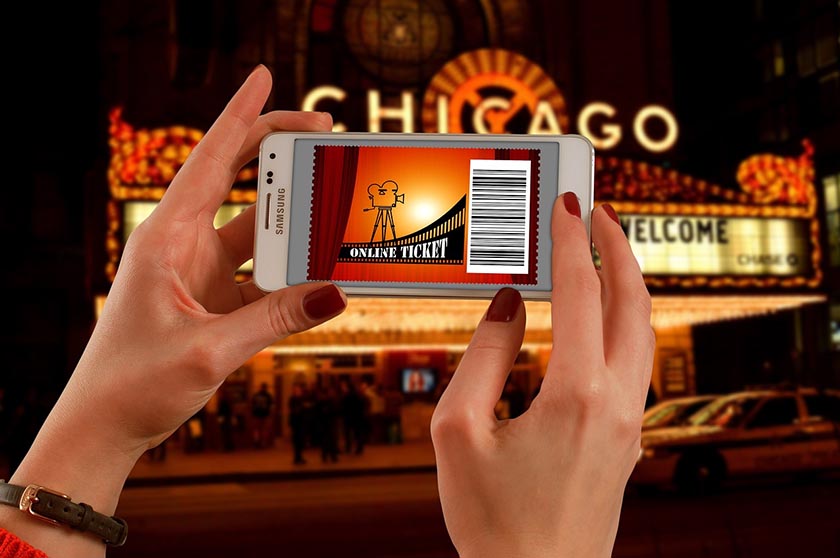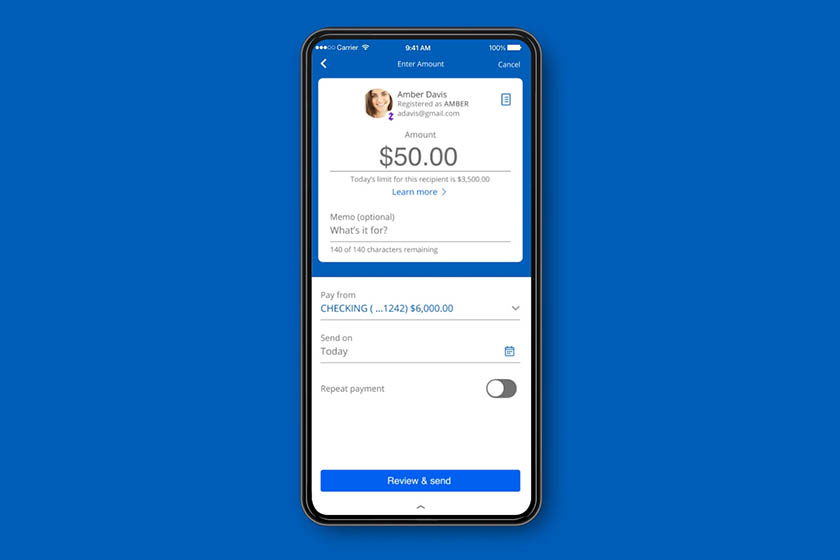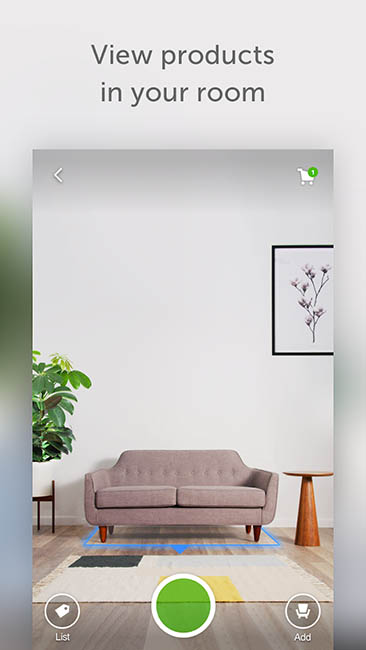Mobile commerce, also known as mcommerce, is simply anything involved in the buying and selling of goods using a mobile device—whether it’s paying your electric bill on an iPad or buying concert tickets on your smartphone. You can achieve this with a phone app or using a mobile-friendly website and a payment processor suited for mobile. It provides an inexpensive but lucrative way to broaden your customer base while providing customers easy access to your products.
In this article, we’ll discuss what is mobile commerce, the types of mobile commerce, and how you can use it to broaden your audience.
Types of Mobile Commerce
There are four main types of mobile commerce. You may use one or more in your business:
- Mobile shopping: This is the one most people think about—the buying and selling of goods using a mobile device. Naturally, this includes the purchase of mobile apps, like games, but also accessing ecommerce via mobile. It can even include certain convenient features, like being able to scan a QR code in-store to look up product information or order an out-of-stock item online for delivery or later pickup in-store.
- Mobile banking: This is also known as “Net banking,” and is growing in popularity, not only for existing customers but for people opening new accounts. Mobile banking offers great convenience, from text alerts to mobile deposits, as well as access to account information wherever you are.
- Mobile payments: This is the ability to make payments with digital wallets like Apple Pay, or using an app like Venmo to do more direct funds transfers.
- Mobile person-to-person: While not normally listed as a type of mobile commerce, with apps like Zelle making it easy to transfer funds directly to someone’s bank account simply using their mobile phone number, it’s a growing type of mcommerce for microbusinesses or independent contractors.
Many point-of-sale systems are suitable for mobile sales or have a mobile-friendly ecommerce component. Check out our best mobile POS platforms.
Some Examples of Mobile Commerce
Now that you know the types of mobile commerce, here are a few examples of their use:
- A landscaper that has customers pay for their services via Zelle
- A retailer that offers QR codes to let customers access a chatbot to answer questions about their product
- An ecommerce platform that has a mobile-responsive or mobile-first website
- A theater that provides tickets via text to show at the door
- Uber, Doordash, or similar services where you use an app to have someone come to you
- Paid apps for your phone or downloads for mobile (like audiobooks)
- A shopper purchasing through a retailer’s mobile app or social media profile

Mobile commerce makes it easy to purchase items anywhere, including last-minute tickets for attractions. (Source: Pixabay)
Mcommerce vs Ecommerce
Mobile commerce and ecommerce both involve buying and selling goods via the Internet. In fact, in many cases, mcommerce is a subset of ecommerce. However, there are some differences:
- Device: Mcommerce uses a handheld device like a tablet or smartphone. Ecommerce can be done on a tablet or phone, but it is also designed for a laptop or desktop computer. This means mcommerce accommodates a smaller screen size, scrolling, and other mobile features.
- Personalization and data collection: With mcommerce, you can collect more data from the consumer’s phone, including more precise location and browsing history, which you may not be able to acquire from an ecommerce site. For example, if you sell theater tickets, mcommerce can let you know if people are purchasing from home or when walking about downtown.
- Payment options: Ecommerce normally relies on credit cards, but credit card numbers can be a hassle to type in on a mobile device. Thus, mcommerce often uses more mobile-friendly payment options, like Apple Pay or Google Pay, which are easier to access using a phone.
- Communication options: Mcommerce makes it easier to reach customers via text, which is more likely to be seen than email.
- Security: Mcommerce is actually more secure than ecommerce, as biometric authentication, mobile wallets, and quick response times help close some security gaps in ecommerce and the use of credit cards online. Of course, mobile phones are more likely to be lost or stolen than desktop computers.
How Mcommerce Works
For retail, the process is similar to ecommerce. The customer accesses your store via app or mobile-friendly website, selects their products, provides the shipping information (or download approval if applicable), and puts in their payment. You verify the order (often by text), fulfill the order, and ship the product.
In order to achieve this, start with an ecommerce website or mcommerce app and create your online store. Add a payment processor that can easily accept mobile payments. Then, promote your site on social media, via customer email, or in-store using QR codes that link to your new site.
The most important aspect of mcommerce for retail is to have an excellent ecommerce website that will adapt to mobile (unless you want to create a mobile-specific app). Check out our best ecommerce platforms for retail and look for those we flagged with mobile responsiveness.

Mobile apps like Zelle make it easy to accept payments directly to your account. (Source: Chase Bank)
If you are an independent service worker, such as for repair or landscaping, then all you may need is a business account with Zelle, CashApp, Apple Pay, or other person-to-person funds transfer.
Consider having more than one option to suit your customers. PayPal is always a good standby that does not require a traditional credit card processing account. Alternatively, you can use a mobile POS system like Square (or PayPal’s Zettle) to accept payments. This can help you track payments per service, too. The POS apps are free, but there is a surcharge for payment processing.
Pros and Cons of Mobile Commerce
| PROS | CONS |
|---|---|
| Broader reach | Needs mobile payment methods |
| Customer convenience | Continual optimization |
| Speedy communication | Contact is more technological than personal |
| Inexpensive | Does not replace physical store |
| Easy for retailer | |
When it comes right down to it, mcommerce has a lot of advantages that make it a great addition to your ecommerce site or physical store—but not so many that you want to shut down either in favor of it.
On the positive side, mobile commerce offers the following advantages:
- Increases your customer base. With you, you can reach customers where they are—on their phones. Mobile sales are on the rise, with mcommerce sales expected to comprise 8.7% of all retail sales by 2026. Some 60% of ecommerce purchases were made via a mobile device, per Data Report.
- Improves customer communications and marketing. Not only can text or even social media communications enhance or replace email, but you can also take advantage of location information provided by a phone’s GPS to provide location-specific marketing, like sending an ad for a sale as a customer passes by a specific store. When used in the service industry, it’s easier to send appointment reminders.
- Yields a higher conversion rate. According to Biz4commerce, the abandoned cart rate for mcommerce is nearly 75% less than that of ecommerce. This is primarily because with ecommerce, the customer has to manually put in payment information for each sale, where mcommerce usually stores that data.
- Provides customer convenience. With a well-optimized site or app, customers can easily order items wherever they are, reach customer support, access their accounts, and use more functions that result in a happier and more engaged customer.
- Allows for cost-efficiency. Mcommerce is incredibly affordable, especially when compared to a physical store. The best ecommerce site providers offer mcommerce tools to some degree. Naturally, you’ll need to pay for shipping items (or pass that price on), but that is no different from standard ecommerce.
- Makes mcommerce easy for you via automations. Like with ecommerce, mobile commerce allows for automated responses (like order acknowledgment, reminders, or shipping updates). Payments are also handled automatically. In fact, some physical stores offer QR codes so customers can pay via mobile without waiting in line for a cashier. Some payments even go straight to your account without a holding period.
- Offers more security than computers. With access codes and biometric access just to get into the phone, mcommerce tends to be more secure than ordering via a computer. Also, the use of mobile wallets, with their encryption and tokenization, can be more secure than a credit card.
We expected that younger generations would be more drawn to mobile shopping, but according to Statista, 24% of Gen X consumers shop via mobile—2% more than Gen Z and 4% more than millennials! (Only 9% of Boomers use mcommerce.)
Of course, mcommerce has its disadvantages:
- Sites must be optimized regularly. Unlike computers, smartphones and tablets are constantly improving, and there are many operating systems. Plus, users are less patient with apps that don’t work. If your mcommerce site does not keep up, or if you have a wonky app, then you will lose customers, perhaps forever.
- You need a variety of payment methods. Mobile commerce users often want to use mobile payment methods. Be sure your payment processor works with these or that you have signed up for them individually.
- Mcommerce lacks a personal touch. While automated responses have the advantage of ease and speed, they don’t replace human interaction. People still choose to go to a physical store 55% to 81% of the time, depending on the age of the shopper. Mcommerce, then, is usually a great addition to a physical store—but it’s not a replacement.
Ecommerce Trends and the Future of Mcommerce
Because mcommerce is a part of overall ecommerce, trends affecting ecommerce also influence mobile sales. Overall, ecommerce continues to enjoy steady growth, surpassing $1 trillion in sales in 2022, and is expected to grow to $8.1 trillion by 2026. Mobile commerce is supposed to comprise 40% of those sales by 2024. Currently, 29% of mobile users worldwide shop on their devices at least once per week.
Augmented reality continues to be a big demand. Augmented reality superimposes a computer-generated image of the user’s view onto the screen. It’s especially useful for products a consumer might wear, like eyeglasses. According to Viserta, 71% of shoppers said they’d shop more if AR was offered. With the ease of selfies on phones, it’s a natural addition for mcommerce.

Augmented reality is a growing trend that can translate to mobile. (Source: Houzz app on Google Play Store)
Around 47% of shoppers have used voice commands to do online shopping, with most being highly satisfied by the experience. While Alexa accounts for a large part of this, mobile users can shop via Siri and Google Assistant.
Social commerce is expected to generate $6.2 trillion in sales by 2030. With 83% of social media visits being done from mobile devices, this is a must-have for mcommerce. Along with this is the growing trend toward livestreaming shopping events, which have a 10X higher conversion rate.
We’ve mentioned the utility of using a chatbot on phones to answer customer questions. It turns out that 41% of consumers prefer this feature over calls or speaking to someone in person.
Learn more about mobile commerce trends.
How Retailers & Ecommerce Businesses Should Leverage Mcommerce
When adopting mcommerce, it should not only be a part of your sales arm but also of your retail marketing strategy. Here are just a few ways to use mcommerce to improve your bottom line.
- Make mobile a priority. When designing your ecommerce site, forego fancy designs that may not translate well to the small screen. Similarly, if designing a mobile shopping cart, always favor utility. People are far more likely to leave a site that does not work well than one that lacks flourishes.
- Adopt conveniences that translate well to mobile. Features like text marketing, automated responses, one-click checkout, mobile wallets, and chatbots will go a long way to enhancing your customer’s experience.
- Offer in-store pickup. This makes it easy for a mobile shopper to put in an order while on the go.
- Set-up QR codes in your physical store. Make it easy for mobile users to access a chatbot for questions about products, pay via mobile, or even place orders while in-store.
- Utilize text messaging for marketing. Text messages are a terrific way to reach people anytime. Use it not only for reminders and receipts but also for coupons. You can even take advantage of location data to send texts when the consumer is in the vicinity.
Mobile opens up a lot of excellent avenues for sales and advertising, but not all of them are easy or inexpensive. Many mobile shopping carts and customer relationship management software charge for text messages, for example. Location tracking may cost extra as well.
- Use social marketing. Since the majority of social media users check their sites on their smartphones, social media advertising, sales, and even chatbots are excellent tools in mcommerce. Also, look at video marketing and livestreams.
- Create an in-app loyalty program. If you create one specifically for mobile, you simply offer special rewards for mobile sales. Otherwise, if you already have one, ensure that your current loyalty program works well on mobile.
- Incorporate augmented and virtual reality. Make use of the smartphone’s built-in camera with virtual fitting rooms for clothes, or for trying on glasses and hairstyles, for example. Furniture stores can create apps for people to see how a piece of furniture fits in their home. Hardware and paint stores have apps for paint matching.
- Promote your mobile shopping site or app. Learn more in our article on retail mobile marketing.
Mcommerce Frequently Asked Questions (FAQs)
For most businesses, yes. Mobile commerce is expected to account for nearly 9% of all purchases by 2025. That’s a significant profit percentage to disregard, especially considering the implementation of mcommerce is not that expensive or difficult in general.
Mcommerce is, in general, a good investment for nearly all businesses. However, unless you already have ecommerce software that caters to mobile, then you’ll need to invest resources into its purchase or development. Be sure your target audience is on mobile; for example, only 9% of Boomers purchase using mobile devices. It could depend on your industry, too; a rocket company, for example, would probably not see any advantage.
As you introduce mobile to your customer base, you’ll need to generate excitement for your new features. You’ll also need an app that is optimized for iOS as well as Android—way too many companies we review favor one or the other, and it shows on user reviews. If you go with an existing platform, such as a POS like Shopify or Square, you’ll want to be sure that the software meets your needs both for mobile and other operations.
Bottom Line
Whether you are starting a new retail business or looking to grow your current one, understanding what is mobile commerce can help you expand your reach to a new customer set. Mobile commerce offers your customers convenience and potentially greater choice of products while keeping your costs down, broadening your reach, and giving you easy access to their contact information for support and marketing. You’ll want to ensure you have tight security of your app or mobile-responsive website, but it can take your ecommerce to the next level.